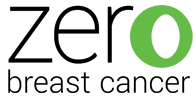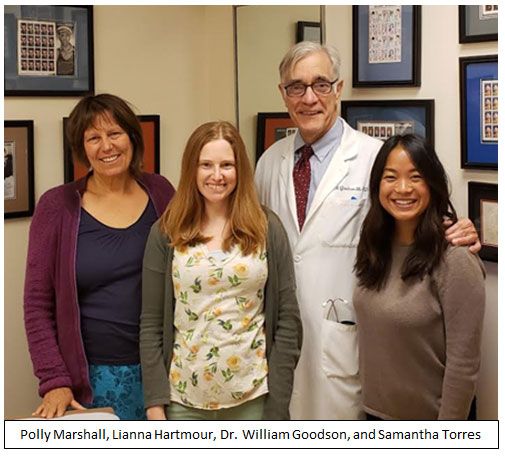My Experience Participating in Breast Cancer Prevention Research
Several months ago, our colleagues at Breast Cancer Over Time (BCOT) asked us to help recruit for their study on the Impact of Chemical Exposure on the Human Breast. Like ZBC, BCOT focuses on preventing breast cancer in the next generation. They address the issue by championing and coordinating research into the environmental causes of breast cancer, while ZBC focuses on engaging communities in translating research into actionable steps that can reduce the risk of breast cancer. This study investigates the risks of chemicals in personal care products (PCPs), a topic ZBC actively addresses.
As complementary organizations, promoting BCOT’s study was an obvious decision. While sharing information about the study it, I also discovered that it was personally relevant to me. Read on to learn more about the study and my experience with it.
Am I eligible?
BCOT is looking for participants who are:
- Ages 18-50
- Pre-menopausal
- Have not had any kind of cancer (except basal cell skin cancer)
- Use PCPs that include certain estrogen-imitating chemicals (study staff review products to assess ingredients)
When looking at the criteria, I wondered if I fit. The main questions (aside from not loving needles) were whether any of my current PCPs (things like deodorant, shampoo, conditioner, cosmetics, etc.) contained these chemicals and if my prescription moisturizer would disqualify me.
I had made an effort to remove unsafe products from my home years ago, so I didn’t expect to find any. However, when I filled out the product inventory, I came across a facial cleanser recommended by my dermatologist and realized I hadn’t considered the ingredients. The BCOT staff reviewed my list and that one product qualified me for the study. My medicated moisturizer wasn’t a problem.
Why participate?
Although I did not expect to qualify, I was grateful for the opportunity to contribute to the study.
Breast cancer research overall is well-funded, but most money goes toward detection and treatment rather than figuring out why people get the disease in the first place. BCOT is committed to researching prevention of breast cancer, and they need people who care about the science to volunteer.
This study is especially important because it looks at how healthy human breast cells are impacted by widely used chemicals when exposure takes place in our bodies, not only when cells are exposed to chemicals in the lab. Also, much of the research conducted has been done using rodent models, but the translation to humans takes far too long. By using healthy human cells in this study, the findings can have a much more direct application for breast cancer prevention.
ZBC’s breast cancer risk reduction education relies upon prevention research, which is strongest when it involves healthy participants. Volunteering for the study is not only a valuable contribution to prevention science, it also strengthens our educational campaigns.
What is involved in participating?
I committed to a month of using locally-made, healthy PCPs provided by the study, which was worth over $200. Both before and after that month, I agreed to provide samples of blood, urine and breast cells (via fine needle aspiration) in a medical office in San Francisco. Along with the free products, I would receive a $20 gift card for each visit.
The Study Coordinator and BCOT Assistant Director, Samantha (Sam) Torres worked with me to find dates for my two clinical visits with the Clinical Co-Investigator, William Goodson, MD, which needed to be 28 days apart. Before the first study appointment, I was instructed to continue using my current products so that the initial tests would capture a baseline reading. Sam also sent me the IRB approved Informed Consent Packet, which contain more information about the study so that I could think of questions before the appointment.
When I arrived at the medical office, Sam warmly greeted me. She described the study in more detail, assured me that I could stop participation at any time if I was no longer comfortable, and asked if I had any questions before I signed, formally agreeing to participate. I filled out a brief medical questionnaire and gave urine, blood and breast cell samples. This was the first time I had a fine needle aspiration procedure. Although I was nervous, Dr. Goodson and Sam took care to make sure it went smoothly.
At the end of the appointment, I was given the products that I would use for the next 28 days. (If I used make-up, Sam would have gone with me to the store to pay for and help select ones that fit the study criteria.) I was given a log to track which products I used each day, as well as to note when I accidentally used anything not approved.
The first thing I did when I got home was to replace all of my usual products with the study products, which made the transition there easy. It was harder when I was away from home. I kept soap and lip balm by the door with my keys, but I found myself auto-piloting to the hand soap in public restrooms and my old lip balm at work. I bought a small version of the dish soap for the office, but sometimes forgot to use it. I tried my best to minimize these slip-ups, but when they occurred I noted them in the log.
Although it was fun to try a bunch of new, locally-made, healthy products (for free!), I realized it could be difficult to use only study products. I felt fortunate that most of the study products worked well for me and I liked some just as much or better than what I was previously using. For a few others, I needed to make adjustments.
With great relief, I learned that they could accommodate problems that arose for me with the products. The deodorant had a scent to which I am sensitive. I let Sam know and she immediately ordered an unscented version which arrived in a couple of days. Later, I needed a product that was not included—hand sanitizer to serve food at ZBC’s Dipsea Hike. Again, Sam had some shipped to me. When I found products I disliked, I discovered creative work arounds. I didn’t like the body wash and needed a hand soap to take with me, so I used the shampoo for both. I found the deodorant drying, but it worked well if I put lotion on first.
On the 28th day, I returned to Dr. Goodson’s office to give a second sample of urine, blood and breast cells. I also discussed my experience with Sam and Polly Marshall, JD, BCOT’s Executive Director and the study’s Community Investigator (and also a breast cancer survivor). Unsurprisingly, they said that study participants’ products likes and dislikes varied, so the same product that was loved by some was only tolerated by others.
Most of my pre-study products did not contain the targeted chemicals, so I happily returned to them. I had to find a new facewash to replace the one that qualified me for the study, but I continue to use the sunscreen they provided and brought the shampoo and conditioner along with me on a trip.
I found participating to be a rewarding experience and encourage you to give it a try! Going into the study, keep in mind that you’ll probably love some study products and dislike others, but using them (possibly with work-arounds or accommodations by study staff) is manageable and definitely worth it for the scientific value of the study. After it’s over, if you didn’t like a study product but your own product was unhealthy, you can find something else. There are a lot of healthy product options available—we don’t have to choose between something we dislike and something that is unhealthy!
What about you?
Are you between the ages of 18-50, pre-menopausal and without a history of cancer (except basal cell skin cancer)? Do you live near San Francisco? Fill out the eligibility survey to see if you can participate, too! You can also share the link with people you know who might be eligible.
If this study isn’t for you, there are other opportunities to participate in breast cancer research. Anyone, regardless of gender, age, cancer history, health status, or location, can sign up with the Dr. Susan Love Research Foundation Army of Women to see what studies are recruiting. Many take less time and don’t involve medical procedures, and some can be done online. When you sign up, you can opt to get alerts of open studies.
How can we choose healthier products?
Note: If you can participate in BCOT’s study, don’t change your products yet! Start by completing the eligibility survey and seeing whether you qualify. If you do, you’ll need to continue using your current products until the study begins.
Many people are surprised to learn that the United States Federal Drug Administration lacks the authority to approve PCPs the way that they do for other products like pharmaceuticals and medical devices. That leads there to be a lot of PCPs on the market that may cause harm, but fortunately there are some useful tools to help us make informed decisions about what we buy.
ZBC recommends two smartphone apps to use when selecting PCPs: Think Dirty and Environmental Working Group’s (EWG) Healthy Living. Both of these apps are available on Apple and Android devices and allow you to type in products or scan them to find out how they score. Also, if you prefer to use a website instead of an app, you can search for products on EWG’s Skin Deep Database. If what you’re looking for is not in one of these databases, you can enter the ingredients to build your own report on EWG’s Skin Deep webpage here.
If it’s too overwhelming to go through your PCPs individually, other ways you can try to reduce your exposure include using fewer products or selecting ones that have ingredients that you can pronounce.
Article written by Lianna Hartmour, ZBC Program Director


